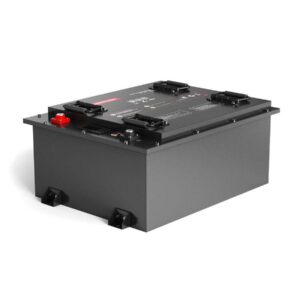
How long should a car battery last?
The typical lifespan of a car battery ranges from 2–5 years, with most standard lead-acid batteries lasting 3–4 years under normal conditions. Premium AGM (Absorbent Glass Mat) or lithium-ion batteries can exceed 5 years with proper maintenance. Key factors influencing longevity include climate extremes (heat accelerates degradation), driving frequency (short trips prevent full recharging), and electrical load management. Proactive measures like voltage monitoring and terminal cleaning extend service life by 20–30%.
Which Golf Cart Batteries Are Better: Costco or Sam’s Club?
What determines car battery lifespan?
Battery lifespan hinges on chemistry type, usage patterns, and environmental conditions. Conventional flooded lead-acid batteries degrade faster in high heat, losing 33% capacity per 8°C above 25°C. AGM variants resist vibration better, ideal for start-stop vehicles.

Deep-cycle discharges below 50% State of Charge (SOC) permanently damage lead plates. A taxi battery cycled daily lasts just 12–18 months versus 4+ years in weekly-driven personal cars. Real-world example: Phoenix drivers replace batteries 18 months earlier than Alaskans due to 40°C+ summer temperatures. Pro Tip: Use a smart charger monthly if driving less than 30 minutes daily.
How do maintenance requirements vary?
Flooded batteries demand quarterly electrolyte top-ups, while sealed AGM units are truly maintenance-free. Corrosion on terminals can increase resistance by 0.5Ω, crippling cold-cranking amps (CCA).
Technicians recommend cleaning terminals biannually with baking soda solution and applying dielectric grease. For example, a 2018 Honda Accord’s factory battery lasted 58 months with monthly terminal inspections versus 31 months in a neglected counterpart. Transitioning to maintenance-free tech? AGM batteries self-recombine 99% of gases, eliminating water loss issues. But what if your vehicle has parasitic drains? A 5mA draw can kill a battery in 3 weeks—always disconnect during long storage.
| Battery Type | Maintenance Interval | Typical Lifespan |
|---|---|---|
| Flooded Lead-Acid | Every 3 months | 2–4 years |
| AGM | None | 4–7 years |
Can extreme temperatures shorten battery life?
Yes—heat accelerates chemical reactions, while cold increases internal resistance. At -18°C, battery capacity drops 40%, requiring thicker plates that fatigue faster.
Lithium iron phosphate (LiFePO4) batteries tolerate -30°C to 60°C, outperforming lead-acid in harsh climates. A Tesla Model 3’s 12V LiFePO4 battery routinely lasts 5+ years in Norway’s subzero winters. Pro Tip: Insulate battery compartments in extreme climates—neoprene sleeves reduce temperature swings by 15°C.
Do charging systems affect longevity?
Modern smart alternators with voltage-regulated charging extend life by preventing overcharging. Older constant-voltage systems often push batteries to 14.8V+, boiling off electrolyte.
Aftermarket battery management systems (BMS) optimize charging profiles—a 2022 study showed 23% lifespan increase in retrofitted vehicles. For example, BMW’s Intelligent Battery Sensor adjusts charging based on driving patterns, achieving 6-year average battery life. But how does this impact DIYers? Always match aftermarket alternators to battery specs—mismatched units cause chronic undercharging.
| Charging System | Voltage Range | Impact on Lifespan |
|---|---|---|
| Basic Alternator | 13.8–14.4V | Standard 3–5 years |
| Smart Charging | 13.2–15.5V | +20–30% lifespan |
When should batteries be replaced?
Replace when capacity falls below 60% or CCA drops 30% from rated value. Load testers provide accurate diagnostics—a healthy 600CCA battery should maintain 9.6V+ after 15 seconds at 50% load.
Dealers often use conductance testers; however, these miss early sulfation. A 2023 AAA study found 38% of “good” tested batteries failed within 6 months. Real-world example: A Nissan Leaf’s 12V battery showing 12.4V at rest but dipping to 8.9V during accessory use requires immediate replacement. Pro Tip: Replace batteries every 4 years preventively—the $150 cost beats $300+ tow bills and ECU resets.
Battery Expert Insight
FAQs
Can jump-starting damage a weak battery?
Repeated jumps induce thermal stress—each 200A surge degrades plates 3× faster. Use a booster pack instead of another vehicle for safer recharging.
Do battery tenders extend life?
Quality tenders maintaining 13.2–13.8V float charge prevent sulfation, adding 12–18 months to garage-kept car batteries.
Is voltage alone sufficient for testing?
No—a resting 12.6V battery might have 40% capacity left. Always perform load tests or measure specific gravity (1.265+ indicates full charge).
